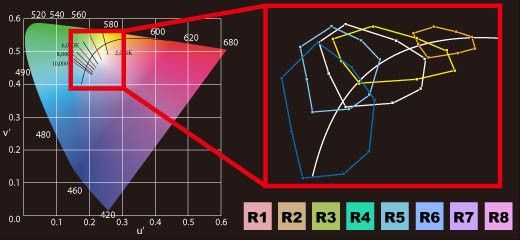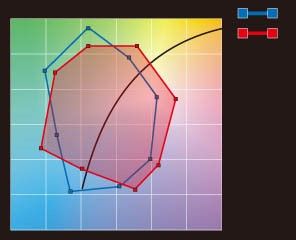Over the past decade, LED technology has experienced significant advancements, and as a result LED lighting has been increasingly adopted.
In order to determine a good luminous environment when employing LED lighting, it is suggested that Gamut Area Index (GAI) be used as a measurement.
In principle, GAI is usually calculated from the area of the polygon defined by the chromaticity of the eight color swatches used in CRI definition for a light source (R1~ R8), the same reference samples used to calculate color rendering index (CRI) in CIE 1976 color space when illuminated by a given light source.
In the past, people should take an expensive spectroradiometer for spectral measurements and a computer installed with data-analyzing software to get accurate TLCI values. Now, you have a much more convenient and smart choice: world’s first handheld and SMART spectrometer “Lighting Passport” and the SMART APP “Spectrum Genius" series.

Figure 1: The Standard of each Gamut Area Range on CIE 1976.
The area of the polygon created by this plot is that source’s GAI, so the larger the area, the higher the GAI. High GAI is characteristic of a source with good color discrimination and saturation of colors, or vividness. GAI can be over 100, but this usually means colors appear over-saturated. Generally, architects, lighting specialists, industrial designers, and theatrical lighting designers recommend choosing a source with high CRI (85 or greater) and a high GAI (80-100).

Figure 2: The Calculations of Gamut Area, the Blue Area means Standard Reference, and the Red Area means the Measured Value.
Through the creation of the cutting-age SMART spectrometer “Lighting Passport” and the professional “Spectrum Genius Mobile (SGM)” or “Spectrum Genius Essence (SGE)”, your smart device will provide complete light source measurement information anytime, anywhere, Asensetek allowing users to work at forefront of industry.
